Stay in the know on all smart updates of your favorite topics.
Will the 15-minute city cause the US suburbs to disappear? 6/7

Urbanisation in the US is undergoing major changes. The image of a central city surrounded by sprawling suburbs therefore needs to be updated. The question is what place does the 15-minute city have in it? That is what this somewhat longer post is about
From the 1950s, residents of US cities began moving en masse to the suburbs. A detached house in the green came within reach for the middle and upper classes, and the car made it possible to commute daily to factories and offices. These were initially still located in and around the cities. The government stimulated this development by investing billions in the road network.
From the 1980s, offices also started to move away from the big cities. They moved to attractive locations, often near motorway junctions. Sometimes large shopping and entertainment centres also settled there, and flats were built on a small scale for supporting staff. Garreau called such cities 'edge cities'.
Investors built new suburbs called 'urban villages' in the vicinity of the new office locations, significantly reducing the distance to the offices. This did not reduce congestion on congested highways.
However, more and more younger workers had no desire to live in suburbs. The progressive board of Arlington, near Washington DC, took the decision in the 1980s to develop a total of seven walkable, inclusive, attractive and densely built-up cores in circles of up to 800 metres around metro stations. In each was a wide range of employment, flats, shops and other amenities . In the process, the Rosslyn-Balston Corridor emerged and experienced rapid growth. The population of the seven cores now stands at 71,000 out of a total of 136,000 jobs. 36% of all residents use the metro or bus for commuting, which is unprecedentedly high for the US. The Rosslyn-Balston Corridor is a model for many other medium-sized cities in the US, such as New Rochelle near new York.
Moreover, to meet the desire to live within walking distance of all daily amenities, there is a strong movement to also regenerate the suburbs themselves. This is done by building new centres in the suburbs and densifying part of the suburbs.
The new centres have a wide range of flats, shopping facilities, restaurants and entertainment centres. Dublin Bridge Park, 30 minutes from Columbus (Ohio) is one of many examples.
It is a walkable residential and commercial area and an easily accessible centre for residents from the surrounding suburbs. It is located on the site of a former mall.
Densification of the suburbs is necessary because of the high demand for (affordable) housing, but also to create sufficient support for the new centres.
Space is plentiful. In the suburbs, there are thousands of (semi-)detached houses that are too large for the mostly older couples who occupy them. An obvious solution is to split the houses, make them energy-positive and turn them into two or three starter homes. There are many examples how this can be done in a way that does not affect the identity of the suburbs (image).
New construction in suburbs
This kind of solution is difficult to realise because the municipal authorities concerned are bound by decades-old zoning plans, which prescribe in detail what can be built somewhere. Some of the residents fiercely oppose changing the laws. Especially in California, the NIMBYs (not in my backyard) and the YIMBYs (yes in my backyard) have a stranglehold on each other and housing construction is completely stalled.
But even without changing zoning laws, there are incremental changes. Here and there, for instance, garages, usually intended for two or three cars, are being converted into 'assessor flats' for grandma and grandpa or for children who cannot buy a house of their own. But garden houses are also being added and souterrains constructed. Along the path of gradualness, this adds thousands of housing units, without causing much fuss.
It is also worth noting that small, sometimes sleepy towns seem to be at the beginning of a period of boom. They are particularly popular with millennials. These towns are eminently 'walkable' , the houses are not expensive and there is a wide range of amenities. The distance to the city is long, but you can work well from home and that is increasingly the pattern. The pandemic and the homeworking it has initiated has greatly increased the popularity of this kind of residential location.
All in all, urbanisation in the US can be typified by the creation of giant metropolitan areas, across old municipal boundaries. These areas are a conglomeration of new cities, rivalling the old mostly shrinking and poverty-stricken cities in terms of amenities, and where much of employment is in offices and laboratories. In between are the suburbs, with a growing variety of housing. The aim is to create higher densities around railway stations. Besides the older suburbs, 'urban villages' have emerged in attractive locations. More and more suburbs are getting their own walkable centres, with a wide range of flats and facilities. Green space has been severely restricted by these developments.
According to Christopher Leinberger, professor of real estate and urban analysis at George Washington University, there is no doubt that in the US, walkable, attractive cores with a mixed population and a varied housing supply following the example of the Rosslyn-Ballston corridor are the future. In addition, walkable car-free neighbourhoods, with attractive housing and ample amenities are in high demand in the US. Some of the 'urban villages' are developing as such. The objection is that these are 'walkable islands', rising in an environment that is anything but walkable. So residents always have one or two cars in the car park for when they leave the neighbourhood, as good metro or train connections are scarce. Nor are these kinds of neighbourhoods paragons of a mixed population; rents tend to be well above the already unaffordable average.
The answer of the question in the header therefore is: locally and slowly
😀Resultaten - Is betrokkenheid van de gemeenschap de moeite waard? 😀

We hebben uiteenlopende en interessante reacties ontvangen van stedenbouwkundigen, architecten en gemeenten. Als u wilt weten wat andere professionals denken, vul dan deze enquête in met uw e-mailadres en wij delen de inzichten met u.
Bedankt! 😀
Follow Playground on LinkedIn
We've received varied and interesting responses from urban developers, architects, and municipalities. If you want to know what other professionals think, please fill out this survey with your email, and we will share the insights with you.
Thank you! 😀
Mobiliteit als schaars goed - Denk mee: Hoe regelen we het recht om te reizen?
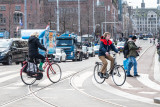
Mobiliteit staat voor vrijheid, maar zorgt ook voor ongelijke lasten. Tijdens deze sessie onderzoeken we samen in een interactieve simulatie een systeem dat met 'mobiliteitskrediet' werkt. Wat zijn de effecten voor de samenleving? Biedt het kansen voor een eerlijkere verdeling om maakt het de ongelijkheid alleen maar groter?
Deze avond is onderdeel van een studie van de TU Delft, in samenwerking met AMS Institute en gemeente Amsterdam. Let op: Om deel te nemen aan deze avond in Pakhuis de Zwijger, heb je een werkende smartphone nodig.
NB. Deelname aan de sessie wordt beloond met een VVV-bon ter waarde van 10-euro.
Aanmelden kan via de website van Pakhuis de Zwijger https://dezwijger.nl/programma/mobiliteit-als-schaars-goed
Wanneer: Dinsdag 23 april
Hoe laat: 19:30-21:30
Waar: Pakhuis de Zwijger, IJzaal (Piet Heinkade 179, 1019 HC Amsterdam)
The '15-minute principle' also applies to rural areas (4/7)

Due to a long stay in the hospital, I was unable to post my columns. I also cannot guarantee their continuity in the near future, but I will do my best...
In my previous post, I emphasised that urban densification should be coordinated with other claims on space. These are: expanding blue-green infrastructure and the desire to combine living and working. I am also thinking of urban horticulture. It is therefore unlikely that all the necessary housing in the Netherlands - mentioned is a number of one million housing units - can be realised in the existing built-up area. Expansion into rural areas is then inevitable and makes it possible to improve the quality of these rural areas. Densification of the many villages and small towns in our country enable to approach them from the '15-minute principle' as well. Villages should thereby become large enough to support at least a small supermarket, primary school and health centre, but also to accommodate small businesses. A fast and frequent public transport-connection to a city, to other villages and to a railway station in the vicinity is important.
A thorny issue is the quality of nature in the rural area. Unfortunately, it is in bad shape. A considerable part of the rural area consists of grass plots with large-scale agro-industrial use and arable land on which cattle feed is grown. Half of the Netherlands is for cows, which, incidentally, are mostly in stalls. Restoring nature in the area that is predominantly characterised by large-scale livestock farming, is an essential task for the coming decades.
The development of sufficiently dense built-up areas both in cities and villages and the development of new nature around and within those cities and villages is a beckoning prospect. This can be done by applying the idea of 'scheggen' in and around medium-sized and large cities. These are green zones that penetrate deep into the urban area. New residential and work locations can then join the already built-up area, preferably along existing railway lines and (fast) bus connections. These neighbourhoods can be built in their entirety with movement on foot and by bicycle as a starting point. The centre is a small densely built-up central part, where the desired amenities can be found.
In terms of nature development, depending on the possibilities of the soil, I am thinking of the development of forest and heath areas and lush grasslands, combined with extensive livestock farming, small-scale cultivation of agricultural and horticultural products for the benefit of nearby city, water features with a sponge function with partly recreational use, and a network of footpaths and cycle paths. Picture above: nature development and stream restoration (Photo: Bob Luijks)
Below you can link to my free downloadable e-book: 25 Building blocks to create better streets, neighborhoods and cities
Opening exhibition: Urban Sky Lab – Designing for drones in the city

Last month designers FABRICations, Studio To Create and Inbo the question: “How can drones create a more livable Amsterdam?” The teams developed near-future design scenarios were emergency response and delivery of goods (and people) would impact project areas the Western Port Area, Amsterdam Zuidoost, and RAI Amsterdam. Project partners Arcam and the Amsterdam Drone Lab invite you to the “Urban Sky Lab” expo which kicks off with an actual drone flying from Marineterrein to the ARCAM building to open the expo. Curious about the design proposals? or how this new low altitude airspace above our city will work? Join us!
Title: Opening Exhibition Amsterdam Urban Sky Lab
Date: Thursday, March 28, 2024
Time: walk-in from 5 p.m. – end around 7 p.m.
Location: Arcam
Address: Prins Hendrikkade 600
Sign up for the opening: https://forms.gle/GTNfDBNdUfqA2fhJ6
Creatieve Krachtsessie
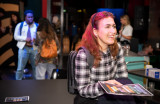
In deze kennissessie verkennen we de kracht van ontwerpbenaderingen bij het aanpakken van complexe maatschappelijke vraagstukken in nauwe samenwerking met overheden.
Overheden en andere publieke instellingen werken hard aan grote maatschappelijke vraagstukken waar ontwerpers tot op heden nog te weinig bij worden betrokken. En dat terwijl inzet van een ontwerpende aanpak bij maatschappelijke vraagstukken grote potentie heeft. Ontwerpers zijn bij uitstek opgeleid om integraal, iteratief, en met een frisse, kritische blik naar problemen te kijken. Ze beschikken bovendien over een gereedschapskist vol creatieve methodes waarmee niet-conventionele oplossingsrichtingen gezocht kunnen worden.
De ontwerpende wereld met haar creatieve aanpak en de ambtelijke procedures van de institutionele wereld gaan echter niet altijd goed samen. Wederzijds onbegrip of onbekendheid staan een goede samenwerking regelmatig in de weg. En het verbeelden of verkennen van mogelijke toekomsten is een goed begin, maar hoe kunnen die visies ook daadwerkelijk landen in een complexe wereld met ingesleten gedrag, ingewikkelde procedures, en uiteenlopende belangen?
Running Large Language Models locally 3/3

In a series of 3 workshops we want to help you in setting up Ollama and running your local LLM’s. Being able to run a Large Language Model locally has a lot of advantages, next to not paying for a pro plan or API costs, it also means not sharing your chat data.
Thanks to recent developments ('quantization') we now have models like Mistral 8x7B that run on your laptop! There are also many products that support you in running, creating and sharing LLM’s locally with a command line, like the open source app Ollama.
Workshop 1/3 (April 17th); getting started
Workshop 2/3 (May 15th); making the most of Ollama on a variety of devices
Workshop 3/3 (June 19th); finetuning your LLM
https://www.meetup.com/sensemakersams/events/299714048/
Ollama & running Large Language Models locally

In a series of 3 workshops we want to help you in setting up Ollama and running your local LLM’s. Being able to run a Large Language Model locally has a lot of advantages, next to not paying for a pro plan or API costs, it also means not sharing your chat data.
Thanks to recent developments ('quantization') we now have models like Mistral 8x7B that run on your laptop! There are also many products that support you in running, creating and sharing LLM’s locally with a command line, like the open source app Ollama.
Workshop 1/3 (April 17th, during Appril Festival); getting started
Workshop 2/3 (May 15th); making the most of Ollama on a variety of devices
Workshop 3/3 (June 19th); finetuning your LLM
How do higher density and better quality of life go together? 3/7
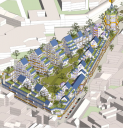
A certain degree of compactness is essential for the viability of 15-minute cities. This is due to the need for an economic threshold for facilities accessible by walking or cycling. A summary of 300 research projects by the OECD shows that compactness increases the efficiency of public services in all respects. But it also reveals disadvantages in terms of health and well-being due to pollution, traffic, and noise. The assumption is that there is an optimal density at which both pleasant living and the presence of everyday facilities - including schools - can be realised. At this point, 'densification' is not at the expense of quality of life but contributes to it. A lower density results in more car use and a higher density will reduce living and green space and the opportunity to create jobs.
The image above is a sketch of the 'Plan Papenvest' in Brussels. The density, 300 dwellings on an area of 1.13 hectares, is ten times that of an average neighbourhood. Urban planners often mention that the density of Dutch cities is much lower than in Paris and Barcelona, for example. Yet it is precisely in these cities that traffic is one of the main causes of air pollution, stress, and health problems. The benefits of compactness combined with a high quality of life can only be realised if the nuisances associated with increasing density are limited. This uncompromisingly means limiting car ownership and use.
Urban planners often seem to argue the other way round. They argue that building in the green areas around cities must be prevented at all costs to protect nature and that there is still enough space for building in the cities. The validity of this view is limited. In the first place, the scarce open space within cities can be better used for clean workshops and nature development in combination with water control. Secondly, much of the 'green' space outside cities is not valuable nature at all. Most of it is used to produce feed for livestock, especially cows. Using a few per cent of this space for housing does not harm nature at all. This housing must be concentrated near public transport. The worst idea is to add a road to the outskirts of every town and village. This will undoubtedly increase the use of cars.
Below you can link to my free downloadable e-book: 25 Building blocks to create better streets, neighborhoods and cities
Demoday #22: Data Commons Collective
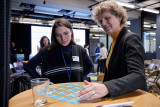
In the big tech-dominated era, data has been commercially exploited for so long that it is now hard to imagine that data sharing might also benefit the community. Yet that is what a collective of businesses, governments, social institutions and residents in Amsterdam aim to do. Sharing more data to better care for the city. On behalf of the Data Commons Collective, Lia Hsu (Strategic Advisor at Amsterdam Economic Board) asked the Amsterdam Smart City network for input and feedback on their Data Commons initiative on the last Demoday of 2023.
What is a (data) common?
Commons are natural resources that are accessible to everyone within a community. Water. Fertile soil. Clean air. Actually everything the earth has given us. We as humanity have increasingly begun to exploit these commons in our pursuit of power and profit maximisation. As a result, we risk exhausting them.
Data is a new, digital resource: a valuable commodity that can be used to improve products and services. Data can thus also be used for the common good. However there are two important differences between a common and a data common: data in commons never runs out, and data in commons is not tied to any geographical location or sociocultural groups.
Four principles for Data Commons
The Data Commons collective is currently working on different applied use cases to understand how data commons can help with concrete solutions to pressing societal problems in the areas of energy, green urban development, mobility, health and culture. Each data commons serves a different purpose and requires a different implementation, but there are four principles that are always the same:
- The data common is used to serve a public or community purpose
- The data common requires cooperation between different parties, such as individuals, companies or public institutions
- The data common is managed according to principles that are acceptable to users and that define who may access the data commons under what conditions, in what ways they may be used, for what purpose, what is meant by data misuse
- The data common is embedded to manage data quality, but also to monitor compliance with the principles and ensure that data misuse is also noticed and that an appropriate response (such as a reprimand, penalty or fine) follows.
The Data Commons Collective is now in the process of developing a framework, which provides a self-assessment tool to guide the formation of Data Commons initiatives by triggering consideration of relevant aspects for creating a data commons. It is a means of reflection, rather than prescription, to encourage sustainable and responsible data initiatives.
Energy Data Commons case and Value Workshop by Waag
After the introduction to the Data Commons Collective and Framework by Simone van der Burg (Waag) and Roos de Jong (Deloitte), the participants engaged in a value workshop led by Simone. The case we worked with: we’re dealing with a shortage of affordable and clean energy. Congestion issues are only expected to get worse, due to increased energy use by households en businesses. An energy Data Commons in neighbourhoods can have certain benefits. Such as preventing congestion issues, using clean energy sources more effectively, becoming self-sufficient as a neighbourhood and reducing costs. But under what circumstances would we want to share our energy data with our neighbours? What are the values that we find important when it comes to sharing our energy data?

Results: Which values are important when sharing our energy data?
In smaller groups, the participants discussed which values they found important for an energy data common using a value card deck from Waag. Some values that were mentioned were:
- Trustworthiness: It is important to trust one another when sharing our energy data. It helps when we assume that everyone that is part of the common has the right intentions.
- Fun: The energy Data Commons should be fun and positive! The participants discussed gamification and rewards as part of the common.
- Knowledge: One of the goals of sharing data with each other is to gain more knowledge about energy consumption and saving.
- Justice and solidarity: If everyone in the common feels safe and acknowledged, it will benefit the outcome. Everyone in the common should be treated equally.
- Inclusion and Community-feeling: It is important that people feel involved in the project. The Data Commons should improve our lives, make it more sustainable but also progress our social relations.
During this Demoday, we got to know the Data Commons collective and experienced which values we find important when sharing our data with others. Amsterdam Economic Board will remain involved in the Data Commons Collective in a coordinating role and work on use cases to understand how data commons can work for society.
Would you like to know more about the Data Commons Collective or do you have any input for them? Please feel free to reach out to me via sophie@amsterdamsmartcity.com or leave a comment below.
The 15-minute city: from metaphor to planning concept (2/7)
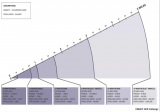
Carlos Moreno, a professor at the Sorbonne University, helped Mayor Anne Hidalgo develop the idea of the 15-minute city. He said that six things made people happy: living, working, amenities, education, wellbeing, and recreation. The quality of the urban environment is enhanced when these functions are realized near each other. The monofunctional expansion of cities in the US, but also in the bidonvilles of Paris, is a thorn in his side, partly because this justifies owning a car.
A more precise definition of the concept of the 15-minute city is needed before it can be implemented on a large scale. It is important to clarify which means of transport must be available to reach certain facilities in a given number of minutes. The list of facilities is usually very comprehensive, while the list of means of transport is usually only vaguely defined. But the distance you can travel in 15 minutes depends on the availability of certain modes of transport (see figure above).
Advocates of "new urbanism" have developed the tools to design 15-minute cities. They are based on three zones: the 5-minute walking zone, the 15-minute walking zone, which coincides with the 5-minute cycling zone, and finally the 15-minute cycling zone. These are not static concepts: In practice, the zones overlap and complement each other.
The 5-minute walking zone
This zone corresponds to the way in which most residential neighbourhoods functioned up until the 1960s, wherever you are in the world. Imagine a space with an average distance from the center to the edge of about 400 meters. In the center you will find a limited number of shops, a (small) supermarket, one or more cafes and a restaurant. The number of residents will vary between two and three thousand. Density will decrease from the centre and the main streets outwards. Green spaces, including a small neighbourhood park, will be distributed throughout the neighbourhood, as will workshops and offices.
In the case of new construction, it is essential that pedestrian areas have a dense network of paths without crossings at ground level with streets where car traffic is allowed. Some paths are wider and allow cycling within the 5- and 15-minute cycle zones. The streets provide access to concentrated parking facilities.
The 5-minute cycle zone and the 15-minute walking zone.
Here the distance from the center to the edge is about one kilometer. In this area, most of the facilities that residents need is available and can be distributed around the centers of the 5-minute walking zones. For example, a slightly larger supermarket may be located between two 5-minute walking zones. This zone will also contain one or more larger parks and some larger concentrations of employment.
This zone can be a large district of a city, but it can also be a small municipality or district of around 15 to 25,000 inhabitants. With such a population there will be little room for dogmatic design, especially when it comes to existing buildings. But even then, it is possible to separate traffic types by keeping cars off many streets and clustering car parks. The bottom line is that all destinations in this zone can be reached quickly by walking and cycling, and that car routes can be crossed safely.
The car will be used (occasionally) for several destinations. For example, for large shopping trips to the supermarket.
The 15-minute cycle zone.
This zone will be home to 100.00 or more residents. The large variation is due to the (accidental) presence of facilities for a larger catchment area, such as an industrial estate, a furniture boulevard or an IKEA, a university or a (regional) hospital. It is certainly not a sum of comparable 5-minute cycle zones. Nevertheless, the aim is to distribute functions over the whole area on as small a scale as possible. In practice, this zone is also crossed by several roads for car traffic. The network of cycle paths provides the most direct links between the 5-minute cycle zones and the wider area.
The main urban development objectives for this zone are good accessibility to urban facilities by public transport from all neighbourhoods, the prohibition of hypermarkets and a certain distribution of central functions throughout the area: Residents should be able to go out and have fun in a few places and not just in a central part of the city.
Below you can link to my free downloadable e-book: 25 Building blocks to create better streets, neighborhoods and cities.
TH/NGS 2023

Join us on 15 December for our annual ThingsCon event powered by CLICKNL. Participate in interactive sessions, be inspired by the keynotes, and view the thought-provoking projects in our exhibitions. And most of all, meet each other!
True to ThingsCon mission, we focus on a theme that we feel resonates with current developments and discussions that explore and promote the development of fair, responsible, and human-centric technologies for the IoT and beyond; our current working theme is <em>‘Un</em>/i<em>ntended Consequences’</em>. Read more on our website.
Friday 15 December will be our main conference day. With a mix of: interactive sessions, inspiring keynotes, pitches from the community and an inspiring design exhibition.
- Opening and closing keynote by Maria Luce Lupetti (TU Delft) and Bas van de Poel (Modem)
- 12 interactive sessions in two rounds
- Short project pitches
- Exhibition with the best design student work and case-studies from practitioners.
- Meet fellow participants during lunch and breaks, ending with drinks
Find more details on the program page!
𝗧𝗵𝗲 𝗖𝗮𝗺𝗲𝗿𝗮 𝗖𝗮𝗿 𝗙𝗮𝗶𝗿 / 𝗧𝗵𝗲 𝗙𝗮𝗶𝗿 𝗖𝗮𝗺𝗲𝗿𝗮 𝗖𝗮𝗿 experiment

𝗧𝗵𝗲 𝗖𝗮𝗺𝗲𝗿𝗮 𝗖𝗮𝗿 𝗙𝗮𝗶𝗿 / 𝗧𝗵𝗲 𝗙𝗮𝗶𝗿 𝗖𝗮𝗺𝗲𝗿𝗮 𝗖𝗮𝗿
This experiment created by Tessa Steenkamp, questions what the camera car in your city sees, that you can’t see? Come explore the journey its data travel, and how they are used. Which functions do you think are a good idea – and where do you think is the limit? More info here
The experiment is organized by the HvA 𝙃𝙪𝙢𝙖𝙣 𝙑𝙖𝙡𝙪𝙚𝙨 𝙛𝙤𝙧 𝙎𝙢𝙖𝙧𝙩𝙚𝙧 𝘾𝙞𝙩𝙞𝙚𝙨 research team. Human Values for Smarter Cities is a 4 year research project on how to make smart city technology understandable and contestable through civic participation.
The experiment is hosted by 𝗧𝗛/𝗡𝗚𝗦 𝟮𝟬𝟮𝟯 on 𝗗𝗲𝗰 𝟭𝟱𝘁𝗵 at Het Nieuwe Instituut. This year's theme: ‘𝗨𝗻/𝗻𝘁𝗲𝗻𝗱𝗲𝗱 𝗰𝗼𝗻𝘀𝗲𝗾𝘂𝗲𝗻𝗰𝗲𝘀’, explores and promotes the development of fair, responsible, and human-centric technologies for the #IoT and beyond. The event is organized by ThingsCon and powered by CLICKNL.
𝗥𝗲𝗴𝗶𝘀𝘁𝗲𝗿 here 𝗳𝗼𝗿 𝗧𝗛/𝗡𝗚𝗦 𝟮𝟬𝟮𝟯 𝗮𝗻𝗱 𝘄𝗲 𝗹𝗼𝗼𝗸 𝗳𝗼𝗿𝘄𝗮𝗿𝗱 𝘁𝗼 𝘀𝗲𝗲𝗶𝗻𝗴 𝘆𝗼𝘂 𝘁𝗵𝗲𝗿𝗲!
𝗥𝗲𝘀𝗽𝗼𝗻𝘀𝗶𝗯𝗹𝗲 𝗨𝗿𝗯𝗮𝗻 𝗦𝗲𝗻𝘀𝗶𝗻𝗴 workshop
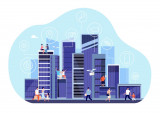
𝗥𝗲𝘀𝗽𝗼𝗻𝘀𝗶𝗯𝗹𝗲 𝗨𝗿𝗯𝗮𝗻 𝗦𝗲𝗻𝘀𝗶𝗻𝗴
In this workshop, Tom van Arman will guide you through some concrete citizen-by-design applications, toolkits and techniques to keep your smart city projects safe, insightful and inclusive to all. In this hands-on workshop, we will examine the Scan-Car. What is its purpose? What what does it do today? What can it do tomorrow? Teams will collaborate and speculate how the Scan Car can fit a citizen-centric future city. More info here
The workshop is organized by the HvA 𝙃𝙪𝙢𝙖𝙣 𝙑𝙖𝙡𝙪𝙚𝙨 𝙛𝙤𝙧 𝙎𝙢𝙖𝙧𝙩𝙚𝙧 𝘾𝙞𝙩𝙞𝙚𝙨 research team. Human Values for Smarter Cities is a 4 year research project on how to make smart city technology understandable and contestable through civic participation.
The workshop is hosted by 𝗧𝗛/𝗡𝗚𝗦 𝟮𝟬𝟮𝟯 on 𝗗𝗲𝗰 𝟭𝟱𝘁𝗵 at Het Nieuwe Instituut. This year's theme: ‘𝗨𝗻/𝗻𝘁𝗲𝗻𝗱𝗲𝗱 𝗰𝗼𝗻𝘀𝗲𝗾𝘂𝗲𝗻𝗰𝗲𝘀’, explores and promotes the development of fair, responsible, and human-centric technologies for the #IoT and beyond. The event is organized by ThingsCon and powered by CLICKNL.
𝗥𝗲𝗴𝗶𝘀𝘁𝗲𝗿 here 𝗳𝗼𝗿 𝗧𝗛/𝗡𝗚𝗦 𝟮𝟬𝟮𝟯 𝗮𝗻𝗱 𝘄𝗲 𝗹𝗼𝗼𝗸 𝗳𝗼𝗿𝘄𝗮𝗿𝗱 𝘁𝗼 𝘀𝗲𝗲𝗶𝗻𝗴 𝘆𝗼𝘂 𝘁𝗵𝗲𝗿𝗲!
Responsible apps and other digital dilemmas

Scrolling endlessly? Get off your screen and join us for an evening of insights and inspiration with remarkable speakers at our upcoming meetup event! Mike Lee of Stichting Appsterdam will revisit the crucial topic of ethics in app development, shedding light on principles for the future. Joris de Leeuw will share some useful techniques to avoid our constant digital distractions. Mohamed S Bah, founder of City Rights App, will share creative solutions for migrant challenges through podcasting and storytelling. Social designer Anna Noyons of (ink). social design will discuss designing products that bring out the best in people. Emiel Poot will explore the balance between human nature and the digital landscape. See you there for a night of discovery and connections!
AGENDA:
- 17:00 Welcome drinks - Welcome drinks to break the ice and network a bit with fellow attendees.
- 17:30 Opening and Welcome - Pinch / Appsterdam
- 17:45 Kick-off Speaker - Mike Lee - Mayor of Appsterdam. Mike will be revisiting his 2013 flagship talk “Ethics Made Easy”. How does this talk still hold up ten years later? What has changed, what principles should app makers consider going forward?
- 18:10 Joris de Leeuw - focus trainer at Diep Werk Doen. With his company Diep Werk Doen Joris trains knowledge workers how to better concentrate on their work and resist the constant lure of apps, calls, email and media. His method teaches the principle of attention by design; how we can reshape our own thoughts and behaviours to become more productive and less restless and distracted. He will give a talk on a few of the most recent insights in the field of focus and productivity. Website: https://www.diepwerkdoen.nl.
- 18:30 Mohamed Bah - City Rights App and City Rights Radio. Mohamed is the founder and host of the City Rights Radio and co-founder of the City Rights App. With his platforms he tries to find creative solutions to problems faced by migrants. Concerned with the dangers of negative stereotypes and its impact on the already marginalized community, he uses podcasting, and storytelling to reframe migrant representation in media.
- 18:40 Food is served
- 19:10 Anna Noyons - Anna is a social designer and the founder of (ink). social design. Anna will give a talk about designing services, products and systems that bring out the best in us, people.
- 19:30 Emiel Poot - De Jonge Strateeg & Appsterdammer - Emiel will delve into the balance between our human nature and todays digital landscape. We all have a fundamental need for social connection, but how have our instincts adapted to digital relationships, communication, and sense of belonging? Join us as we navigate the fascinating synergy between our wired brains and the virtual networks that have reshaped the very essence of human interaction.
- 20:00 - Closing and networking drinks.
Digitale tweeling als gesprekspartner in gebiedsontwikkeling

Zie digitale tweelingen niet als dé oplossing voor maatschappelijke vraagstukken die in gebieden spelen. Data en modellen belichten namelijk slechts een deel van de werkelijkheid. Bij ruimtelijke opgaven, zoals het woningtekort, de energietransitie en natuurherstel, gaat het om het gesprek om te komen tot een gedeelde werkelijkheid. Zorg dat digitalisering hierbij een constructieve rol speelt.
Op de grens van Brabant en Limburg ligt de Peel. Daar komen onder grote tijdsdruk verschillende opgaven samen: transitie van de landbouw, omslag naar hernieuwbare energie inclusief netverzwaringen, woningtekort, verdroging van de Peel en de mogelijke heropening van de vliegbasis Vredepeel. Het maken van die ruimtelijke puzzel vergt samenwerking tussen twintig gemeenten, drie waterschappen, twee provincies, diverse departementen en tal van bedrijven, maatschappelijke organisaties en burgers. Daarnaast vraagt die puzzel een integrale afweging: ingrepen voor de ene opgave kunnen immers vergaande gevolgen hebben voor andere opgaven.
Voor de digitale tweeling is echter geen vraagstuk te complex, schreef Microsoft in een artikel op Ibestuur. Het bedrijf werkt zelfs aan een digitale tweeling van de aarde, met de ambitie om deze beter te besturen voor mens en natuur. Tijdens een conferentie over slimme steden in Barcelona viel de sterke aantrekkingskracht van de digitale tweeling voor beleidsmakers en bestuurders op. ‘Doe mij ook maar zo’n digitale tweeling’ leek de dominante gedachte te zijn. De talrijke pilots en experimenten met digitale tweelingen in het ruimtelijk domein onderstrepen dit.
Hype?
Er lijkt sprake van een ‘hype’: digitale tweelingen als panacee voor gebiedsontwikkeling. Deze ‘hype’ hangt samen met de toenemende hoeveelheid en beschikbaarheid van (real-time) data over onze leefomgeving, zoals lucht-, grond- en waterkwaliteit en energieverbruik. Dit is mede het gevolg van het beter en goedkoper worden van monitoringstechnieken, zoals slimme meters in huis en allerlei soorten sensoren op straat, in drones en satellieten. Daarnaast stimuleert en verplicht de aankomende Omgevingswet het gebruik van data.
Partijen gebruiken verschillende definities voor de digitale tweeling. Doorgaans verwijst de term ‘digitale tweeling’ naar het idee dat een fysieke en virtuele ‘tweeling’ met elkaar in verbinding staan door de uitwisseling van data en informatie. Data over de fysieke wereld voeden de virtuele tweeling en inzichten daaruit kunnen weer worden gebruikt om te interveniëren in de fysieke wereld. Dat helpt bij het maken van allerlei producten – van de bouw van de Boekelose brug tot de BMW fabriek – en het verbeteren van bedrijfsprocessen, zoals het onderhoud en beperking van de CO2-uitstoot van de Airbus.
Hierdoor geïnspireerd, zien veel beleidsmakers en bestuurders de digitale tweeling als een belangrijk middel om besluitvorming – van beleidsvoorbereiding tot implementatie – te verbeteren door de gevolgen van keuzes te simuleren en te visualiseren. In het domein van politiek en bestuur is de digitale tweeling dus meer dan een technologische innovatie; het is een democratische innovatie. Dit roept de vraag op: hoe kan een digitale tweeling de besluitvorming daadwerkelijk verbeteren?
Er bestaat geen eenduidige werkelijkheid
Dat kan door de variëteit en veelzijdigheid van een gebied te erkennen. Een gebied is nooit één monolithische werkelijkheid; er spelen vaak duizend-en-een belangen en processen tegelijk. Toch is zo’n eenduidige werkelijkheid wel precies wat een digitale tweeling suggereert. En daarin schuilt zowel de kracht als het risico van dit instrument. Kracht, omdat het zorgt voor een basis voor een gesprek. En een goed gesprek is de basis voor goede besluitvorming. Risico, omdat zo’n eenduidige werkelijkheid ons kan doen vergeten dat de digitale tweeling selectief is. Hij laat slechts een beperkt aantal variabelen zien. Bovendien, datgene wat subjectief of lastiger meetbaar is, bijvoorbeeld de betekenis van een gebied voor haar inwoners, kunnen we gemakkelijk over het hoofd zien. Terwijl een democratisch proces juist ook voor die zachte waarden aandacht behoort te hebben.
Gesprekspartner
Beschouw een digitale tweeling dus niet als de gedeelde werkelijkheid zelf, maar als gesprekspartner in een breder democratisch proces. Daarbij is ook transparantie van belang over welke data wel aanwezig zijn en welke niet. En over welke modellen gebruikt worden en de aannames die daarbij gemaakt worden. Zo laat de maatschappelijke aandacht voor bijvoorbeeld de stikstofmodellen van het RIVM zien dat data en modellen niet neutraal zijn en ook niet apolitiek, ook al worden ze soms wel zo gepresenteerd. Data, modellen en algoritmes hebben namelijk invloed op hoe we problemen definiëren en begrijpen, wie daarbij betrokken worden en hoe we vervolgens handelen. Of toegepast op besluitvorming: ze bepalen welke maatschappelijke opgaven wel en niet worden opgepakt en hoe en wie wel of niet mee mag praten en beslissen.
Praktijkcases?
Dit artikel is een weergave van een aantal eerste inzichten in een project van het Rathenau Instituut naar de wijze waarop digitale tweelingen kunnen bijdragen aan besluitvorming over gebiedsontwikkeling. Hierin heeft het Rathenau samengewerkt met de Provincie Noord-Holland. Voor het vervolg van dit project is het instituut op zoek naar interessante praktijkcases.
De digitale tweeling als gesprekspartner dus. Hoe doe je dat op een verantwoorde manier? Wie kan hier praktijkcases van laten zien?
Dit artikel is geschreven door Romy Dekker (Rathenau Instituut), Paul Strijp (Provincie Noord-Holland) Allerd Nanninga (Rathenau Instituut) en Rinie van Est (Rathenau Instituut) en gepubliceerd op iBestuur. De auteurs danken Brian de Vogel, Henk Scholten, Arny Plomp, Herman Wilken, Rosemarie Mijlhoff, Jan Bruijn en Martine Verweij voor hun waardevolle inbreng in het project.
Beeld: Shutterstock
Lecture & workshop: BioCommons
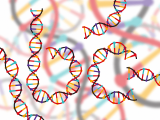
Waag lecture and workshop: BioCommons
In the BioCommons project, Waag investigates how we can combine and use our genetic data, while managing them as a community.
Free entrance | Register here
Join us for a thought-provoking event that puts you at the forefront of genomic research and health decision-making. Have you ever wondered how your DNA can contribute to medical research and improve your healthcare journey?
We invite you to explore this exciting frontier at our workshop: it is you who can decide what type of research questions can be formulated about your genetic information.
The evening will start with an introduction to BioCommons by Waag's Lucas Evers, followed by a keynote of professor Karien Stronks on The Helius study, insights in the biological, psychological and social causes of the unequal burden of disease across ethnic groups in Amsterdam. After this, a hands-on workshop follows for you to participate in.
In this workshop you will be able to:
- Discover what kind of research you would like to see conducted with your DNA. Explore how patient-centered genomic services can empower you to shape the future of medical investigations.
- You will delve into the importance of genetic literacy and informed consent. Understand how individuals can make informed decisions regarding the use of their genetic data in research and healthcare.
- Learn about Waag's BioCommons project and learn about its latest findings. Our experts will provide brief interventions and mediate discussions to help you understand the impact of genetic information as a common good.
- Enhanced Decision-Making: Consider how an improved approach to direct consumer testing, which is more inclusive and diverse, can grant individuals more control over their genetic and non-genetic health-data. We will explore how this new data management paradigm influences your behaviour and health.
- Cultural and Ethical Aspects: Reflect on the intricate connections between culture, identity, ethnicity, and genetics. Discuss the implications and potential benefits of a patient-centered approach to genetics.
Programme
19:00-19:15 hrs - Welcome
19:15-19:30 hrs - Introduction to BioCommons by Lucas Evers
19:30- 19:55 hrs - Keynote by Karien Stronks: The Helius study, insights in the biological, psychological and social causes of the unequal burden of disease across ethnic groups in Amsterdam
19:55-20:45 hrs - Workshop
20:45 to 21:00 hrs - Conclusion
Free entrance | Register here
Society 5.0 Festival

How can you help guide the planet’s well-being towards a Society 5.0?
This question is central to the Society 5.0 Festival. For two days, 31 Oct and 1 Nov, The Social Hub Amsterdam City will be the beating heart where knowledge institutions and the creative industry come together to indulge in masterclasses, workshops, performances, interactive installations and so much more guaranteed to spark your creativity.
More information and tickets, here: https://society5.event-hva.nl/
------
Kunnen we samen een slimme, duurzame samenleving vormgeven zonder daarbij het welzijn van mens en planeet uit het oog te verliezen?
Op 31 okt en 1 nov komt de creatieve industrie tijdens Society 5.0 Festival bij elkaar in The Social Hub Amsterdam City om het antwoord op deze vraag te verkennen. Verwacht masterclasses, workshops, interactieve (kunst)installaties, performances en meer!
<strong>Meer informatie en tickets hier:</strong> https://society5.event-hva.nl/
Ethics and other digital dilemmas

Our we spending more time than offline? Get off your screen and join us as we discuss ‘addiction by design’ and other digital dilemmas. Meet the experts on ethics and responsible technologies. During this event we will learn about how digital applications have evolved, how they have shaped our society, and how we can make them more humane. Don't miss this opportunity to network with fellow apps-for-good developers.
Next Thursday November 2nd, we will be discussing the bitter truths of ethics in web & app development. As a designer, coder or business developer, how can we keep our apps responsible? How can we create healthier relationships between app users (and makers)? What does our digital and social society look like in the next 15 years? The goal of this event is to showcase, discover and foster apps for good.
AGENDA:
- 17:00 Welcome drinks - Welcome drinks to break the ice and network a bit with fellow attendees.
- 17:30 Opening and Welcome - Pinch / Appsterdam
- 17:45 Kick-off Speaker - Mike Lee - Mayor of Appsterdam. Mike will be revisiting his 2013 flagship talk “Ethics Made Easy”. How does this talk still hold up ten years later? What has changed, what principles should app makers consider going forward?
- 18:10 Ethical Expert: Douwe Schmidt - Public Tech Gemeente Amsterdam. Douwe us a co-found of the Tada - 6 values that guide the responsible use of data and the responsible design of technology in the city based on inclusivity, with control, human centric, legitimate and controlled, open and transparent & from everyone, for everyone.
- 18:30 Food is served
- 19:00 TDB
- 19:20 Emiel Poot - De Jonge Strateeg & Appsterdammer - Emiel will delve into the balance between our human nature and todays digital landscape. We all have a fundamental need for social connection, but how have our instincts adapted to digital relationships, communication, and sense of belonging? Join us as we navigate the fascinating synergy between our wired brains and the virtual networks that have reshaped the very essence of human interaction.
- 19:45 - Closing and networking drinks.
OPEN CALL: Sociale digitale oplossingen gezocht

Heb jij ideeën over en kennis van hoe je technologie zou kunnen inzetten als middel om het leven van kwetsbare of gemarginaliseerde doelgroepen in Amsterdam iets makkelijker te maken? Werk je bijvoorbeeld voor een tech bedrijf met ideeën over digitale oplossingen voor deze Amsterdammers? Bekijk dan de 'challenges' op de website van CommuniCity. CommuniCity - Tweede Open Call
De winnende voorstellen krijgen een subsidie van 12.500 euro om hun oplossing te piloten. De deadline is 31 oktober.
In totaal zijn er door zeven Europese steden twintig challenges uitgeschreven. Maximaal 38 voorstellen zullen worden geselecteerd om een pilot uit te voeren.
De challenges in Amsterdam
- Hoe kunnen ouders ondersteund worden in (seks)educatie en veiligheid?
- Hoe maak je een lokaal betaalsysteem onder inwoners en lokale ondernemers in Amsterdam Nieuw-West toegankelijk en geaccepteerd?
- Hoe stimuleer je meisjes in Nieuw-West om te sporten en bewegen?
- Hoe betrek je bewoners bij een gemeenschapspaar- en krediet coöperatie die sociale initiatieven in de stad ondersteunt?
- Hoe kunnen doven en slechthorenden worden betrokken bij het uitzenden van informatie over het openbaar vervoer?
- Hoe pas je een bestaande technologische oplossing aan voor een specifieke groep?
Voor uitgebreide beschrijvingen van alle challenges en informatie over de beoordelingscriteria, voorwaarden en het aanmeldproces, ga naar CommuniCity - Tweede Open Call
CommuniCity wordt gefinancierd door de EU.
Stay up to date
Get notified about new updates, opportunities or events that match your interests.

